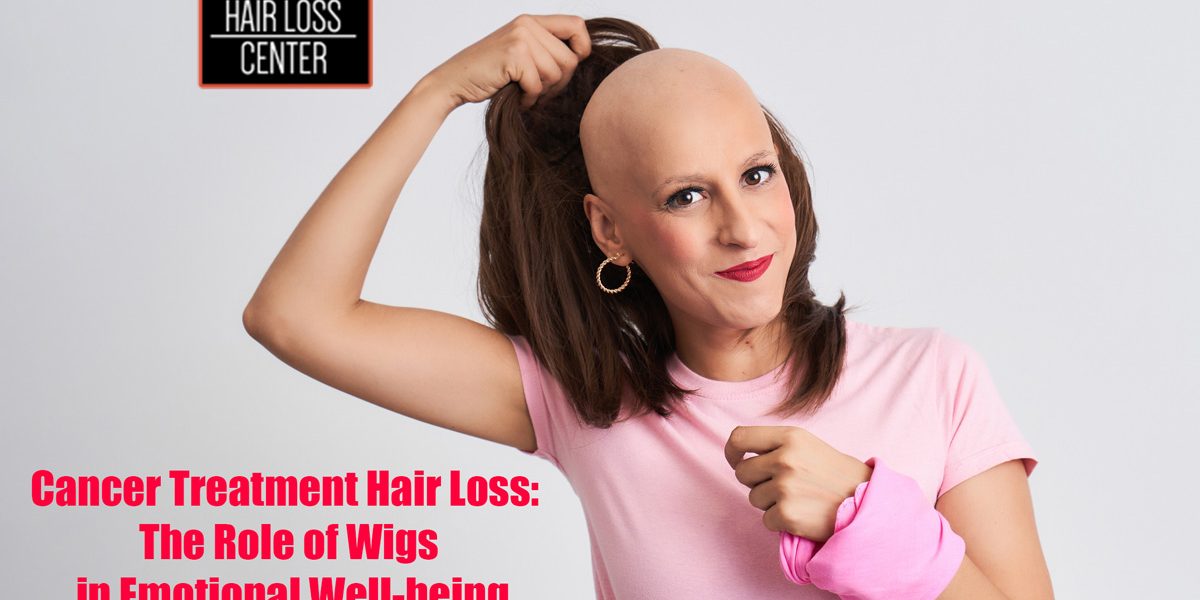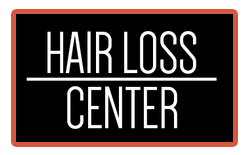Hair loss is one of the most visible and emotionally challenging side effects of cancer treatment, affecting millions of patients each year. This often distressing symptom is primarily linked to chemotherapy, a common treatment that targets rapidly dividing cells throughout the body. Unfortunately, this includes the cells within hair follicles, leading to a specific type of hair loss known as chemotherapy-induced alopecia. Understanding why this occurs and the types of hair loss it causes can help patients and their loved ones prepare and cope with this aspect of the cancer journey.
One prevalent form of hair loss during chemotherapy is anagen effluvium, which occurs when hair falls out during the active growth phase of the hair cycle. This can lead to sudden, widespread hair thinning or complete hair loss on the scalp and other body areas. Knowing that this type of hair loss can vary in degree based on factors like the specific chemotherapy drugs, dosage, and individual patient response can help patients anticipate and manage their expectations throughout treatment.
While losing hair may be difficult to face, understanding the root causes can make it more manageable. This article delves into the primary causes of cancer treatment hair loss, its psychological effects, and solutions like wigs and other headwear that can help ease the journey. At the San Diego Hair Loss Center, we specialize in creating high-quality wigs for cancer patients, offering compassionate support to help you look and feel your best every step of the way.
Seize the reins of your hair loss journey today! Call San Diego Hair Loss Center at 858-284-4832 to schedule your free consultation.
The Profound Emotional Impact of Hair Loss During Cancer Treatment
The emotional toll of hair loss during cancer treatment extends far beyond physical appearance; it affects patients on psychological and social levels. According to the American Cancer Society, hair is often closely tied to identity and self-image, making its loss particularly challenging for many patients.
Hair loss during cancer treatment can trigger a wide range of emotions, including anxiety, depression, and a sense of loss. Many individuals experience a shift in how they view themselves, feeling as though they’ve lost a part of their identity. This transformation often brings about feelings of self-consciousness, making patients reluctant to engage in social interactions and leading, in some cases, to social withdrawal. Body image issues are also common, as patients may struggle with a perceived loss of attractiveness or feel that others view them differently.
Here are some specific emotional challenges faced by patients experiencing cancer-related hair loss:
Anxiety and Depression:
Sudden changes in appearance can increase anxiety and lead to depressive feelings, adding to the emotional burden of coping with a serious illness.
Social Withdrawal:
Many patients feel uncomfortable in social settings due to altered appearance, which may lead them to withdraw from social activities and interactions.
Body Image and Self-esteem:
A changed body image often affects how individuals see themselves and can lead to low self-esteem, impacting confidence.
Navigating these emotional challenges is a key part of the cancer journey. Support groups, counseling, and tools like high-quality wigs can help patients regain a sense of normalcy and confidence. At the San Diego Hair Loss Center, we understand the significance of emotional support during this journey. We provide expertly crafted wigs that not only restore appearance but also help patients feel more like themselves.
Effective Coping Strategies for Managing Hair Loss During Cancer Treatment
Dealing with hair loss during cancer treatment is often a deeply personal and challenging experience. Finding effective ways to cope not only helps patients manage the physical changes but also supports their emotional resilience throughout their treatment journey. By adopting a few practical coping strategies, individuals can maintain their confidence and comfort, ultimately improving their overall well-being.
Here are some valuable strategies to help manage cancer-related hair loss:
Explore Wigs, Headwear, and Accessories:
Many patients find that wearing a wig, scarf, or hat helps them feel more comfortable in their appearance. Wigs are available in a variety of styles and materials, from high-quality human hair to synthetic options, allowing patients to choose the look that best suits their personal style. Additionally, hats and scarves can add a stylish touch while offering comfort and ease of use.
Join Support Groups:
Hair loss support groups for cancer patients provide an invaluable space for individuals to share experiences, gain encouragement, and find community. Speaking with others who are navigating similar challenges can bring a sense of comfort and solidarity that makes the journey feel less isolating.
Seek Professional Counseling:
The emotional impact of hair loss can be significant, often leading to feelings of anxiety, depression, or loss of self-worth. Professional counseling or therapy can help patients work through these complex emotions, providing tools to cope with the psychological effects of hair loss.
Practice Gentle Scalp Care:
A gentle scalp care routine is essential, as it promotes scalp health and prepares for potential hair regrowth after treatment. Using mild shampoos, avoiding harsh chemicals, and incorporating scalp massages can keep the skin nourished and help alleviate discomfort.
Each of these strategies plays a role in building a support system for patients facing hair loss during cancer treatment. By prioritizing self-care and emotional well-being, patients can enhance their confidence and face their treatment journey with a positive outlook. At the San Diego Hair Loss Center, we offer a wide range of wigs designed for comfort and style, helping our clients feel more like themselves as they navigate this chapter.
Preventive Measures: Scalp Cooling Therapy and Other Ways to Minimize Hair Loss During Chemotherapy
For patients undergoing chemotherapy, there are preventive measures available that may help reduce or slow down hair loss, offering a way to maintain some sense of normalcy during treatment. Scalp cooling therapy, for example, is a popular option that has shown promising results in minimizing hair loss for many patients. By understanding these preventive techniques and combining them with a gentle hair care routine, patients can help protect their hair and promote healthy regrowth after treatment.
How Scalp Cooling Therapy Works
Scalp cooling therapy involves wearing a specialized cooling cap before, during, and after chemotherapy sessions. By reducing the temperature of the scalp, this therapy helps constrict blood vessels around hair follicles, limiting the amount of chemotherapy drugs that reach these cells. This process reduces the likelihood of hair loss, as the follicles are less exposed to the effects of the medication. Though results can vary, many patients have found scalp cooling to be effective, with some retaining a significant portion of their hair throughout treatment.
Additional Tips for Gentle Hair Care During Cancer Treatment
Alongside scalp cooling, a gentle hair care routine is essential for supporting scalp health during chemotherapy. By incorporating the following tips, patients can nurture their scalp and hair follicles, enhancing their chances of healthy regrowth after treatment:
- Use Mild, Sulfate-Free Shampoos: Gentle shampoos are less likely to irritate the scalp, making them a better option during treatment. Choose sulfate-free, fragrance-free options to reduce the risk of sensitivity.
- Avoid Heat Styling: Heat from blow dryers, curling irons, and straighteners can weaken hair strands, making them more susceptible to falling out. Opt for air drying whenever possible to reduce damage.
- Opt for Soft Hairbrushes: Using a wide-tooth comb or a soft-bristle brush can minimize tugging and breakage, protecting the hair that remains.
- Moisturize the Scalp: A hydrating scalp serum or gentle moisturizer can soothe dry, itchy skin, helping keep the scalp comfortable and prepared for potential hair regrowth.
The Role of Wigs in Emotional and Physical Support
While scalp cooling and gentle hair care are valuable for preventing hair loss, wigs play an irreplaceable role in restoring confidence and providing emotional support during this time. High-quality wigs offer an immediate solution for those experiencing hair loss, helping them regain a sense of control and comfort as they adapt to their changing appearance.
By combining scalp cooling therapy, gentle care routines, and the use of well-crafted wigs, patients can navigate the journey of hair loss with a greater sense of resilience and confidence. At the San Diego Hair Loss Center, we offer a diverse selection of wigs tailored to meet the unique needs of each individual, supporting our clients as they take charge of their hair loss journey.
Don’t wait—take charge of your hair loss journey today! Embrace these preventive measures and adorn yourself with a wig that serves as your crown of beauty. Call San Diego Hair Loss Center at 858-284-4832 and start your transformation now!
Understanding and Supporting Hair Regrowth After Chemotherapy: What to Expect
After finishing chemotherapy, hair typically starts to regrow within several weeks, though the timeline may vary. The National Cancer Institute explains that while hair often starts to regrow soon after treatment, the initial texture and color may differ, often known as ‘chemo curls.’
What to Expect with Post-Chemotherapy Hair Regrowth
After finishing chemotherapy, hair typically starts to regrow within several weeks, though the timeline may vary from person to person. Initially, new hair might be softer, finer, or even curlier than before, and it could differ in color as well. These early hairs, often referred to as “chemo curls,” can be temporary, with the hair usually returning to its original texture and color over time. While some patients may see their hair come back quickly, others might find that full regrowth takes several months or even up to a year.
Tips for Nurturing New Hair Growth After Cancer Treatment
Supporting hair regrowth involves gentle care routines that protect the scalp and encourage healthy follicle function. Here are some specific ways to care for new hair and promote a smoother regrowth journey:
Use Mild, Nourishing Shampoos and Conditioners:
Opt for sulfate-free, gentle shampoos and conditioners that won’t irritate sensitive scalp skin. Choosing products formulated with hydrating ingredients, like aloe vera or chamomile, can help keep both the scalp and new hair healthy.
Avoid Heat Styling Tools:
During the regrowth phase, it’s best to avoid hair dryers, straighteners, or curling irons, as high heat can damage the delicate new hair. Instead, let hair air dry whenever possible, and use soft towels to pat it dry without pulling or tugging.
Incorporate Scalp Massages:
Gently massaging the scalp can stimulate blood flow to the hair follicles, which may promote healthier growth. Scalp massages are not only beneficial for circulation but can also provide a soothing, relaxing ritual for patients as they focus on self-care.
Consider High-Quality Wigs as a Transition Tool:
For many patients, wearing a high-quality wig during the early stages of regrowth can boost confidence while waiting for natural hair to fully return. A well-crafted wig can offer a sense of normalcy, helping patients feel more like themselves as they adjust to post-treatment changes.
Embracing Hair Regrowth with Patience and Positivity
It’s natural to feel both excitement and impatience as hair begins to return. By adopting a gentle hair care routine and using supportive tools like wigs, patients can nurture their hair’s recovery while embracing each stage of regrowth. Understanding that these changes are part of the healing process can help patients approach this time with positivity and self-compassion.
At the San Diego Hair Loss Center, we offer a wide selection of wigs designed for comfort and natural appearance, supporting patients throughout every phase of their journey. Whether you’re waiting for hair to regrow or looking for a beautiful, immediate solution, our wigs provide both confidence and comfort to help you feel your best.
Frequently Asked Questions About Cancer Treatment Hair Loss
Q: When does hair start to regrow after chemotherapy?
A: Hair regrowth typically begins a few weeks after completing chemotherapy, with full regrowth often taking six months to a year.
Q: What type of wigs are best for cancer patients?
A: Wigs made from high-quality human hair or lightweight, breathable materials are ideal for sensitive scalps. Look for hypoallergenic options for added comfort.
Q: Can scalp cooling therapy prevent hair loss during chemotherapy?
A: Scalp cooling therapy can reduce the amount of hair lost by lowering scalp temperature and limiting drug exposure to hair follicles, though results vary.
Q: How can a wig help during hair regrowth?
A: Wearing a wig during regrowth offers an immediate solution for restoring confidence and helps patients feel more like themselves as they await natural hair recovery.
Q: Are there any special care tips for new hair after chemotherapy?
A: Use gentle, sulfate-free shampoos, avoid heat styling, and consider scalp massages to promote healthy regrowth and protect delicate new hair.
Q: Where can I find wigs specifically designed for cancer-related hair loss?
A: At the San Diego Hair Loss Center, we offer a range of wigs tailored for cancer patients, providing natural-looking and comfortable options to support you through every stage.
Conclusion: Embracing Your Journey with Confidence
Navigating the emotional and physical challenges of hair loss during cancer treatment can be daunting, but understanding the causes and exploring effective coping strategies can make a significant difference. Wigs play a crucial role in helping patients regain a sense of normalcy and confidence, providing an immediate solution to hair loss and supporting emotional well-being.
At the San Diego Hair Loss Center, we specialize in creating high-quality wigs tailored to meet the unique needs of individuals experiencing hair loss due to cancer, alopecia, thyroid conditions, and more. Our compassionate approach ensures that every patient feels supported and empowered throughout their journey.
Explore our service page and call us at 858-284-4832 to learn more about wigs for cancer patients, wigs for chemotherapy, and how we support hair loss and identity, providing comprehensive hair loss support for cancer patients to enhance emotional well-being.


